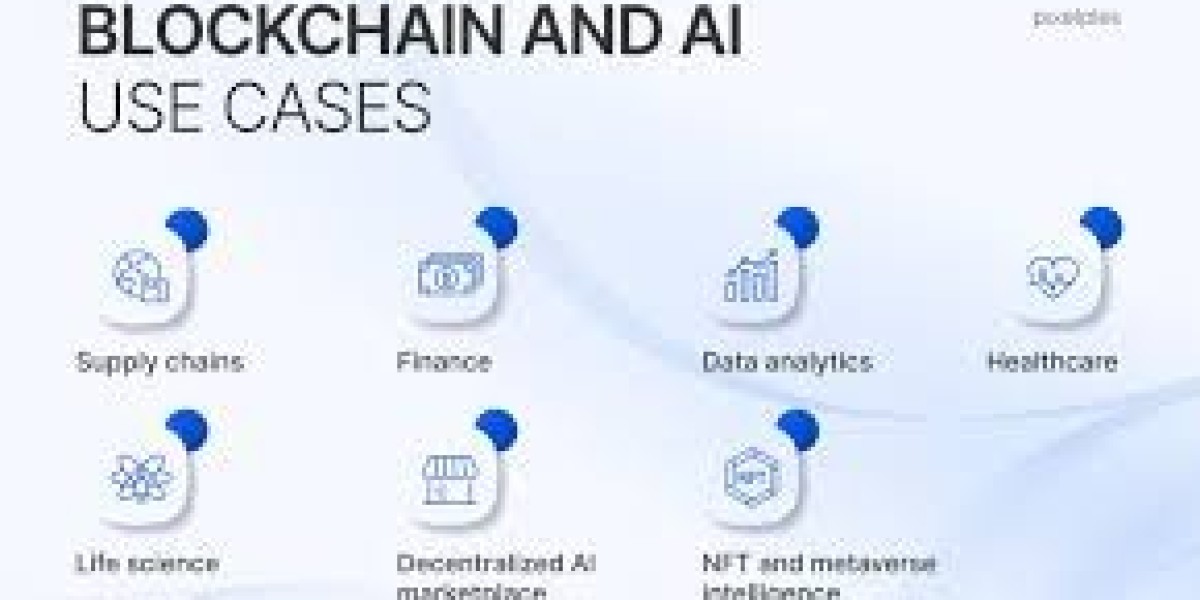Introduction: The Problem with Black Box AI
AI is everywhere—deciding who gets loans, recommending what we buy, even helping doctors with diagnoses. But here’s the thing: most AI systems operate like black boxes. Inputs go in, results come out, but how those results are reached? Often, not even the developers fully know.
That’s a trust issue. If we can’t explain or audit AI decisions, how do we ensure fairness, prevent bias, or verify accuracy? Enter blockchain—not just for crypto bros anymore. Used right, it can inject much-needed transparency and trust into how AI operates.
Let’s break down how.
1. The Transparency Crisis in AI
AI models, especially large ones, learn from massive datasets. But:
Where does that data come from?
How is it processed?
Is it biased or manipulated?
Can we trust the output?
Right now, these questions are hard to answer because training data and algorithms aren’t usually shared. That’s a transparency nightmare.
When companies don’t disclose how their models work—or when models update silently in the background—it creates uncertainty, and worse, potential harm.
2. What Blockchain Actually Brings to the Table
Blockchain isn’t magic, but it is good at a few critical things:
Immutability: Once something’s recorded, it can’t be altered unnoticed.
Decentralization: No single party controls the ledger—reducing the risk of tampering.
Traceability: Every entry has a timestamp and source trail.
Smart Contracts: Automated, self-executing rules to govern how data or models are accessed or modified.
All of these features make blockchain a natural partner for enhancing AI systems that need to be trusted and verifiable.
3. Building Trust with Transparent Data Provenance
Let’s start with data—the fuel for any AI.
When you use blockchain to log data sources, you can track where every piece of training data came from, who added it, when it was added, and whether it was modified. This means:
Auditors can check if the data was ethically sourced.
Regulators can see if any sensitive or restricted data was used.
Companies can prove their models weren’t trained on biased or fake information.
Think of it as a “nutritional label” for data—blockchain provides the ingredients list.
4. Securing AI Models with Tamper-Proof Logs
Once a model is trained, how do you ensure no one tampers with it?
Blockchain lets you store a cryptographic fingerprint (a hash) of the AI model on-chain. If someone changes even a single parameter in the model, the hash won’t match. This:
Prevents covert updates or backdoors.
Allows external parties to verify authenticity.
Enables version tracking with full audit trails.
Companies offering Blockchain AI Solutions Services can help enterprises embed this level of security in AI deployment pipelines.
5. Smart Contracts for Model Usage and Governance
Here’s where things get interesting.
Smart contracts—programmable rules stored on blockchain—can be used to govern how AI models are used. For example:
You can restrict access to sensitive AI models unless users meet certain conditions (like identity checks).
You can trigger payments automatically when a model completes a task.
You can enforce ethical usage rules (e.g., “no facial recognition in public spaces”) by embedding them into the contract itself.
This is about making AI not just smarter, but also self-regulating.
6. Blockchain as a Verifier of AI Output
Sometimes, it’s not the model we care about—it’s the decision it makes.
Imagine an AI that approves or rejects a loan. If that decision is recorded on a blockchain, along with the model version and data snapshot used at the time, you now have:
A record that can be independently verified.
A way to explain and justify decisions to regulators or customers.
Protection against tampering or post-hoc edits.
In regulated industries like finance, healthcare, or defense, this level of auditability is a game-changer.
7. Fighting Deepfakes and Misinformation with On-Chain Proof
AI-generated content (text, video, audio) is flooding the internet—and not all of it is benign.
Blockchain can help authenticate real content by:
Embedding digital watermarks and recording content hashes on-chain.
Letting users verify if a piece of content was AI-generated and whether it’s been edited.
This gives creators a way to prove ownership and helps the public separate fact from fabrication.
8. Real-World Use Cases
a. Ocean Protocol
Ocean uses blockchain to let users share and monetize datasets for AI training—while keeping everything traceable and privacy-preserving.
b. IBM Watson + Blockchain
IBM is integrating blockchain into its Watson AI platform to create transparent supply chains where AI can trace products from source to shelf.
c. SingularityNET
This decentralized AI marketplace runs on blockchain. Developers can deploy AI services and users can verify performance and trust scores, all on-chain.
d. Microsoft & Decentralized Identity
Microsoft is working on decentralized identity solutions that can verify users and devices in AI ecosystems without central authorities.
These aren’t just ideas. They’re already being rolled out by companies offering Blockchain AI Solutions Services.
9. Challenges and Limitations
Okay, let’s not pretend it’s all perfect.
Scalability: Public blockchains can be slow and expensive for high-frequency AI applications.
Privacy: Putting too much on-chain could expose sensitive data.
Interoperability: Getting AI systems and blockchain to “talk” to each other isn’t trivial.
Regulatory Clarity: Laws around blockchain and AI are still catching up—and vary widely by region.
Still, these are problems worth solving, not reasons to back off.
10. The Future of Blockchain-Enhanced AI
In the next five years, expect to see:
Blockchain-verified AI supply chains (from data to decision).
AI marketplaces governed by smart contracts.
Public registries of algorithm changes.
Open-source, auditable model repositories with immutable records.
The end goal? A world where you don’t just use AI—you understand it, trust it, and can hold it accountable. That’s what Blockchain AI Solutions Services are ultimately enabling.
Final Thoughts: Trust Isn’t Optional Anymore
The hype phase of AI is over. Now, it’s about integrity. If companies want users, regulators, and partners to trust their AI, they need transparency baked in from the ground up—not slapped on as an afterthought.
Blockchain isn’t a silver bullet. But used wisely, it solves real problems in how we build, share, and govern intelligent systems.
Trust and accountability won’t happen on their own. They have to be engineered into the system—and blockchain is one of the best tools we’ve got.






